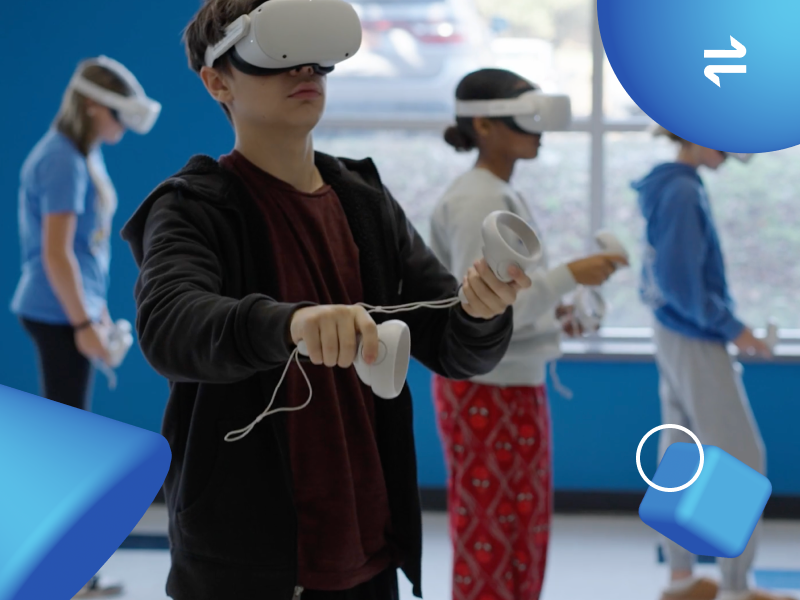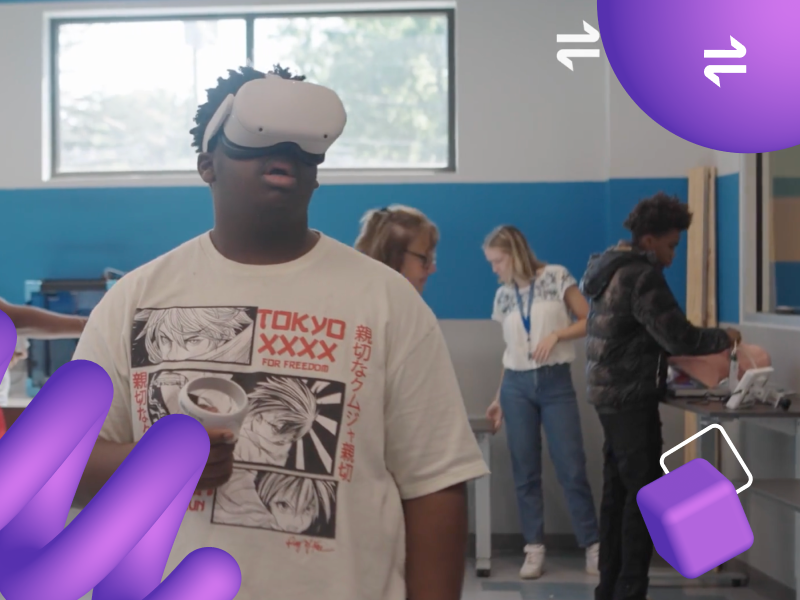Career exploration is a vital part of every student and adult job seeker’s journey. In schools and workforce boards alike, career counselors face heavy caseloads, leaving them with less and less time to spend with each student or job seeker. Combine this with an economy in tumult and an evolving workforce with renewed focus on the skilled trades, and conditions are right for possible crisis — or opportunity.
VR job exploration offers unique benefits to instructors, counselors, and explorers (students and job seekers crafting their training pathways): Namely helping explorers delve into a wide array of different jobs without special equipment or visiting numerous job sites, streamlining research activities, and giving instructors and counselors more time to focus on the unique ways they can help guide their charges.
“Career exploration right now is primarily limited by student and facilitator time constraints,” shared Tom Darling, Transfr’s Director of Product-Market Fit in this article about career exploration. “You also have students who just don’t see the relevance of career exploration.”
We dug into what’s new about our career exploration product on an episode of Upward, the Transfr podcast, with Transfr’s own Bryant Harrison, Director of Product Management, and Shelley Hu, Executive Producer, about why VR career exploration is such a game-changer!
What is career exploration and how did we build it?
Simply put, career exploration refers to a collection of activities that students and explorers undertake to determine which roles and industries fit their interests and skills. Equipped with this understanding, they work with counselors and instructors to construct their personal training pathways to go from where they are now to a fulfilling career in a field with upward mobility and growth potential.
Transfr’s VR career exploration offering developed organically back in 2020, as we discovered that some organizations were using our skills training simulations to determine if explorers might be interested in this or that career option:
“The original career exploration product was an evolution that came from understanding how people were using our virtual training facility product,” Bryant explains. “Employers wanted help filling talent pipelines and driving interest in careers. We also heard from K12 schools and CTE programs that they had all these young people who didn’t know what they wanted to do yet. They thought VR would be a great way to expose people to all these different careers out there. We picked 23 of our virtual training facility simulations that represented a bunch of different career paths, made some user experience changes, and packaged them up into a separate application. It was wildly successful.”
From that powerful start (which also grew out into our augmented reality career exploration offering), organizations using Transfr couldn’t get enough: “When are more career exploration sims coming out?” “Can you make them shorter?” “Can they have more engaging activities?” We knew we had a powerful mandate from our partners to overhaul the career exploration offering and reach more people and change more lives.
What’s new in Career Exploration?
Again: There are a lot of people out there who need guidance building their career pathways and the professionals seeking to help them don’t have much time per person to help them, so job one was simultaneously expanding our array of job options and shortening the sim duration.
“The first big change is that the sim duration is a lot shorter,” says Shelley. “Originally these sims were designed to have a trainee master a skill and could go up to like 15-20 minutes. Customer feedback was that they wanted explorers to just get a taste of what it’s like to have this career. So we cut them a lot shorter, to the three-to-five minute range. Now explorers can get through a lot more experiences in a sitting.”
The ability to get through a lot of different experiences is less impactful if there’s not a wide range of careers to choose from. Increasing the volume and variety of jobs was also super important, as Shelley explains:
“We’re also providing a lot more career clusters. Originally CE had 4 out of our now 16 clusters and our goal is to try to have careers in all 16 clusters eventually. We’re also prioritizing fields like health science, as that’s one of the most-requested industries by our customers.”
Diverse career options are important, as are diverse voices and providing experiences that make VR more accessible to all users. While our virtual coach Simon has been with us for a while, expanding the team of career coaches and adding accessibility features like closed captioning will help explorers of all kinds see more of themselves in the simulations they do.
“We’ve added a lot more diversity in our simulations,” Shelley says. “Instead of using Simon over and over again, we now have a unique coach in almost every single simulation. So, when students get to try 3 to 5 simulations, they’re accompanied by 3 to 5 different coaches from different genders and racial and cultural backgrounds.”
Improving career exploration — and lives
The pace of change in the economy and worlds of work is faster than ever before. Almost no one today is equipped to deal with it, but hopefully with Transfr in their corner, schools, workforce boards, community organizations, and other groups will be better equipped to help their audiences find the unique pathways to prosperity that work for them.
With more simulations and more career clusters to choose from, accessibility enhancements, and a more diverse array of career coaches — plus a host of other improvements, hopefully more explorers than ever before will be filled with hope for their futures in the real world after spending some time in a virtual one.



